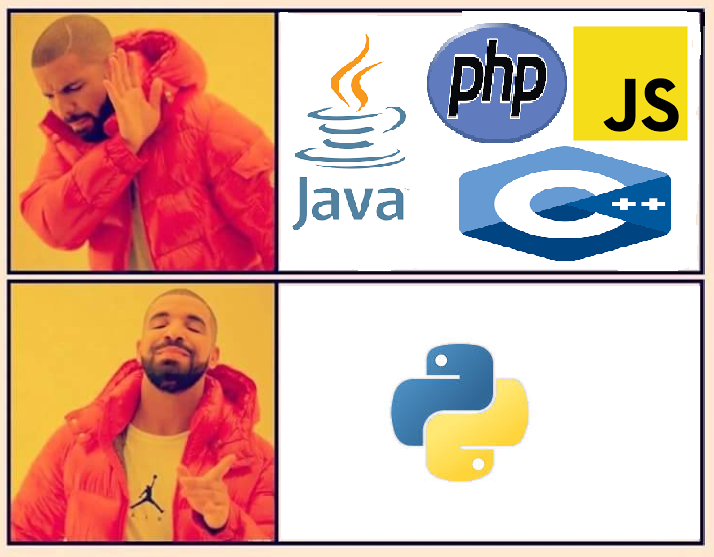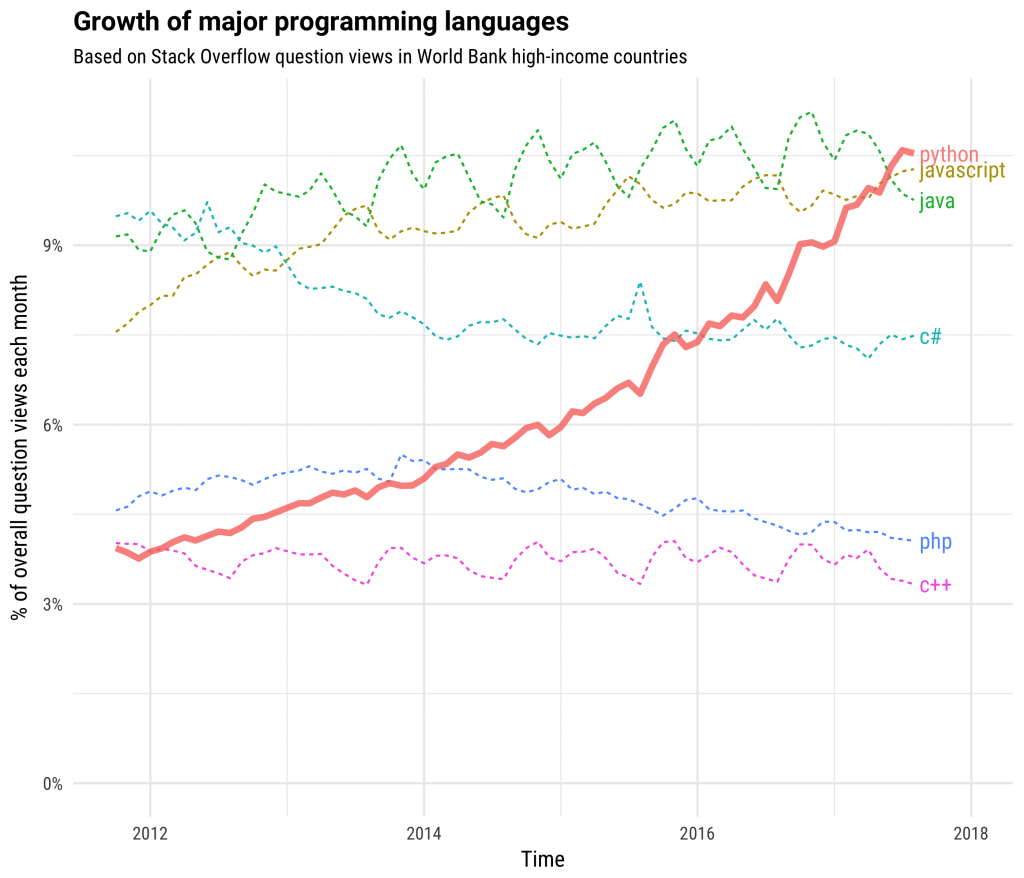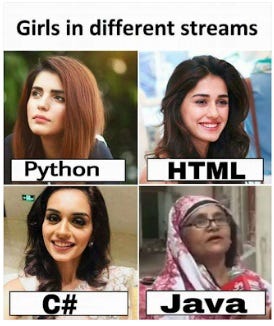Latest news about Bitcoin and all cryptocurrencies. Your daily crypto news habit.
Python is one of the popular high-level programming languages used in an extensive variety of application domains.
The language was created by a Dutch programmer known as Guido van Rossum and initially released in 1991.
DevZero, a U.S.-based Python expert who has spent most of his years teaching people his skills, says that “Python is usually compared to other programming languages, especially because of its distinct features and efficient design philosophy.”
In this article, I’m going to attempt to illustrate how Python is different from the other programming languages.
1. Python is fun to use
Contrary to what most people believe, the Python programming language is not named after the nonvenomous snake called Python.
Its named after the British surreal comedy group in the 1970s called Monty Python, which van Rossum loved following their plays.
The comedy group’s ideals are integrated into Python code and culture. Particularly, to make the language fun to use, users of the language (called Pythonists, Pythonistas, or Pythoneers) usually avoid unnecessary complexities.
For example, Pythonistas use lesser syntactic exceptions and special cases than programmers in other languages like C or Pascal.
Furthermore, the language occasionally employs playful references in its documentation materials; for example, the metasyntactic variables are called spam and eggs in place of the traditional foo and bar.
2. Python focuses on code simplicity and readability
Python’s syntax and semantics emphasize on code simplicity and readability. The language’s design is largely influenced by a group of 20 principles called the Zen of Python.
Here are some of the principles:
- Beautiful is better than ugly
- Simple is better than complex
- Complex is better than complicated
- Readability counts
- In the face of ambiguity, refuse the temptation to guess
- There should be one — and preferably only one — obvious way to do it
- If the implementation is hard to explain, it’s a bad idea
Python is intended to be a language that is easy to read. A well formatted Python code is clean and uncluttered.
It usually utilizes English keywords where other programming languages utilizes punctuations.
Unlike most other programming languages, Python does not utilize curly brackets for delimiting code blocks; instead, it utilizes whitespace indentation. Furthermore, placing semicolons after statements are not necessary.
For example, here is a code snippet in Java:
public class PythonVsJava {public static void main(String[] args)
{System.out.println(“Python Vs Java!”);
}
}
Here is the output:
Python Vs Java!>>>
Here is the same code snippet written in Python:
Print (“Python Vs Java!”)
Here is another code snippet in C++:
#include <iostream>
void main()
{cout << “Python Vs C++!”;
}
Here is the output:
Python Vs C++!>>>
Here is the same code snippet written in Python:
Print (“Python Vs C++!”)
3. Python is highly extensible
Instead of designing Python with all the functionalities on its core, the programming language was meant to be very extensible.
This feature has made the language highly popular when programmable interfaces are required to be incorporated into existing applications.
Van Rossum envisioned a language having a small core with extensive support libraries that can enhance its capabilities.
He wanted to move away from the frustrations he experienced while using the ABC programming language, which does not espouse the same values.
There is a wide variety of Python libraries for completing various tasks, including performing scientific calculations, machine learning, unit testing, graphical user interfaces, and managing databases — anything you like to complete easily, you’d probably find a library for it.
For example, if you want to achieve fast performance in a low-level computing environment, you can migrate time-sensitive operations to extension modules built using the Python programming language such as PyPy and Cython.
The other programming languages do not boast of rich support libraries as Python does.
4. Python is growing fast
Stack Overflow recently recognized the language as the fastest-growing major programming language.
Here is a Stack Overflow chart that shows how Python has experienced impressive growth as compared to the other languages:
Furthermore, the IEEE Spectrum ranks Python as the top language for 2018, for the second consecutive year.
Python’s fast growth is largely attributed to its enticing features, which are absent in other programming languages.
Particularly, its simple and easy to use syntax makes it attractive to first-time developers.
Also, Python’s reliability and efficiency have won the love of professionals working in the rapid growing technology fields like machine learning and data science.
Wrapping up
Python is a versatile programing language that is clearly in its own world. The unique qualities of the language are what set it apart from the rest of the pack.
Nonetheless, besides its advantages, Python is still not a perfect programming language. For example, Python is regarded to be a weak language for mobile computing.
What other Python vs. other languages differences do you know of?
Why can you choose Python over the other programming languages?
Please share your comments below.
P/S: I came across this photo on social media, how true is it?
How is Python Different from Other Programming Languages? was originally published in Hacker Noon on Medium, where people are continuing the conversation by highlighting and responding to this story.
Disclaimer
The views and opinions expressed in this article are solely those of the authors and do not reflect the views of Bitcoin Insider. Every investment and trading move involves risk - this is especially true for cryptocurrencies given their volatility. We strongly advise our readers to conduct their own research when making a decision.





